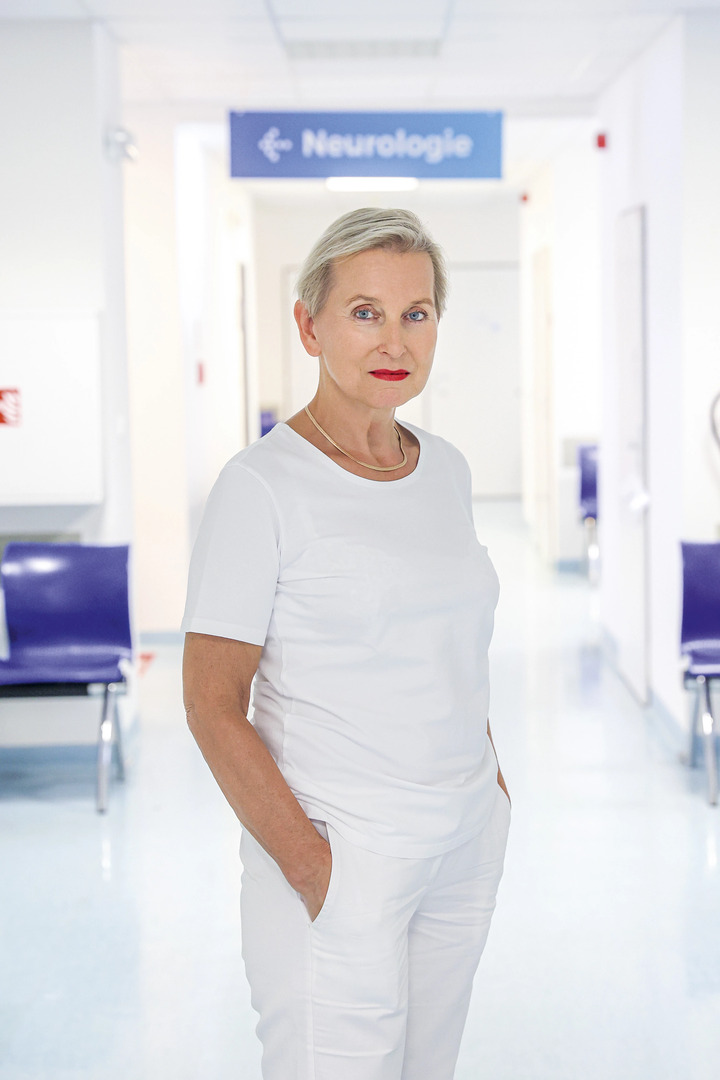MUDr. Jana Zárubová: Experiences with buccal midazolam in real practice are positive and we can significantly improve patients' quality of life
Recently, it has emerged as an alternative to traditionally rectally administered diazepam for stopping prolonged convulsive seizures in patients with epilepsy. What can buccal midazolam offer them and how has it proven itself in real practice? MUDr. Jana Zárubová from the Neurological Clinic of the 2nd Faculty of Medicine, Charles University and Motol University Hospital in Prague describes.

For what cases is buccal midazolam intended?
It stops epileptic seizures and is used to treat prolonged acute convulsive seizures.
For whom is it indicated?
It is intended for infants, toddlers, children, and adolescents – that is, patients from 3 months to 18 years of age. The drug can be used by parents/caregivers only if the patient has been diagnosed with epilepsy. Buccal midazolam can be used in adults when rectal diazepam cannot be applied and/or has not been sufficiently effective.
According to Section 8, Paragraph 4 of the Medicines Act, no other registered drug with the necessary properties is currently available on the Czech market. The patient must be informed about who the oral buccally administered midazolam solution is indicated for and what it is used for, and that there is a recommendation for its use in adults as well. A prerequisite for its prescription is that patients agree with the procedure and the proposed treatment.
What are its main advantages compared to traditionally prescribed rectally administered diazepam?
It lies in easy application, faster onset of action, and short sedation after application. An undeniable advantage is its socially acceptable form of application into the mouth compared to the demeaning and socially unacceptable form of application into the rectum, especially in public.
Is it comparably effective to rectal diazepam? Based on what evidence can these conclusions be drawn?
According to a study published by McIntyre et al. in the journal Lancet (Safety and efficacy of buccal midazolam versus rectal diazepam for emergency treatment of seizures in children: a randomised controlled trial), buccal midazolam stopped a seizure within 8 minutes, while rectal diazepam was effective in 15 minutes.
According to the SPC, the effect of buccal midazolam should occur within 10 minutes. From my clinical practice, it usually sets in within 3–5 minutes.
What common side effects should be expected when using it?
The most common side effects of this treatment are considered to be sedation and drowsiness. However, these clinical manifestations also occur after an epileptic seizure with convulsions. Therefore, it is difficult to distinguish to what extent they are a consequence of the application of buccal midazolam and to what extent they are part of the post-seizure state.
How is buccal midazolam administered?
In the form of a solution, it is prepared for administration in an applicator. The person administering it takes it out of the plastic tube and removes the cap. The medication is intended to be applied into the mouth, into the space between the gum and the cheek, where it is slowly administered.
Do patients and their caregivers receive instructions for its administration? If so, who provides them?
Patients, their relatives, and caregivers are usually instructed to administer the medication by the prescribing physician. Detailed information is also included in the package insert. Additionally, an instructional video is available.
Who can prescribe buccal midazolam?
The prescription of buccal midazolam is limited to neurologists and pediatric neurologists.
What are the current experiences with buccal midazolam in practice in our country and abroad? Does its use better correspond to what we know about prolonged acute convulsive seizures in children and adolescents and how they usually occur?
I can confirm that the experiences from clinical practice are positive. Buccal midazolam reduces the risk of brain damage, associated injuries, and harm. Thanks to its use, situations can be managed without transport to a healthcare facility. It also improves the quality of life for the patient and their close ones and allows them to travel with epilepsy, attend cultural and other events.
Kristýna Poulová
Editorial staff of proLékaře.cz
Did you like this article? Would you like to comment on it? Write to us. We are interested in your opinion. We will not publish it, but we will gladly answer you.

